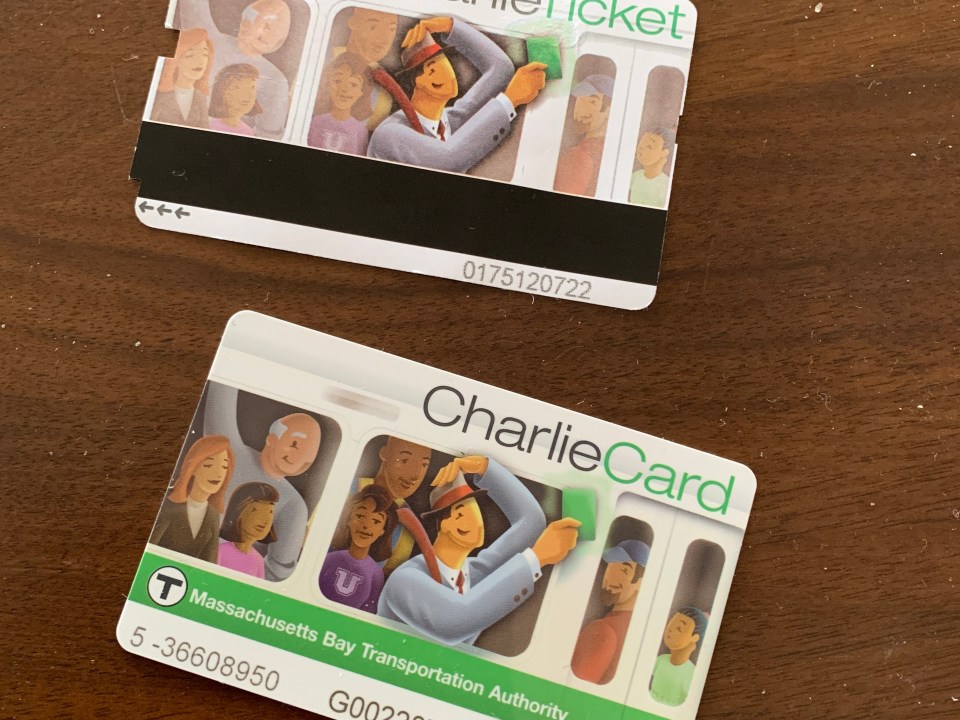A few weeks ago, I landed at Boston Logan Airport and caught the free Silver Line to South Station. I then bought a CharlieTicket from the kiosk for the week. This was my third paper CharlieTicket in two months, and I was starting to wonder how sustainable this was. One day after dinner that week I was walking to the T with my boss when I shared this. He told me to hold on a moment, and walked over to the booth agent. After a quick exchange, she handed him a hard plastic CharlieCard (there’s a difference) that he handed to me before we started walking toward the exit.

It hit me that I was an outsider, and like in many parts of life, there was an entire world that I needed an insider to show me the ropes. What made this meta was an identical experience taking place in parallel during my onboarding at Boston University Libraries. Having worked as a vendor with libraries since 2010, I thought I developed an “insider’s view” into the information profession. But after a month into my appointment as an EIR at BU, it’s become crystal clear that there’s an entire world to research libraries a vendor simply isn’t privy to.
Time to write and think is few and far in between nowadays, but I consider it a part of my work to document my experience and share learnings to people studying the future of work in libraries. Here are a few initial impressions I can’t shake after 30 days.
I’ve learned more about the academic research enterprise and its circumstance in the past 30 days than in the past 9 years.
It’s one thing to get glimpses of the research enterprise through a meeting with a library or listening to a presentation at a conference. It’s an entirely other thing to jump waist-deep into the raging rapid that is an ARL, AAU, R1, large research operation. Weekly meetings, committee participation, attending industry gatherings, and performing deep work associated with the organization’s future is shaping up to be an executive MBA program for aspiring library leaders.
Working in a community rather than a market affords opportunities to innovate as opposed to iterate.
After getting two degrees in library automation and publishing (2, 4-year stints at major vendors), I got so burned out by the bickering, finger-pointing, and showmanship symptomatic of commercial vendors that I began to question my career choices. It’s easy to lose sight of the people and work that makes you excited about libraries when constantly being tasked to out do the “bad guy”. Because you’re constantly studying the competitor’s moves, you’re never able to actually innovate – it’s just varying degrees of iteration to do something cheaper or more novel without realizing the real competitor in the room is actually in the mirror. (More on vendors competing themselves away in another post). On the other hand, it’s revitalizing to be a part of an organization where the mandate is to literally determine the best ways to serve researchers and increase their impact.
People – not resources, collections, or programs – are a library’s most important asset.
The debate on this point will heat up in the coming years as we see the face and age of librarianship continue to shift. But I’m quite confident in my stance that the only force multiplier research libraries have in today’s increasingly complex operating environment are its investments in the development of its people. Our primary challenge then becomes unlocking the potential of our teams by sharing the onus of the library’s evolution with everyone on board, as opposed to a handful of deputies and managers.
A vendor’s orientation, concerns, and goals are distinct, and perhaps anti-thetical to the concerns of the 21st century research enterprise.
Another stark realization that I haven’t been able to shake is how out of sync commercial interests are from that of the library. Of course, the utility of products and services that meet the needs of libraries makes a positive impact. But on this vendor impact spectrum, there comes a point in which the utility becomes the threat. This is because commercial vendors have lost sight of their purpose and why they were created in the first place, replacing that purpose with the profit motive. Businesses don’t exist to create profit – they create profit in order to exist. Why they exist is a different reason altogether that the profit motive has obfuscated. The victims in this of course are libraries and patrons.
More to share, but in the meantime, there’s more work to be done.





1 comments On Library Entrepreneur in Residence: Month 1
Pingback: Libraries and The Vendor Conundrum – Tony Zanders ()